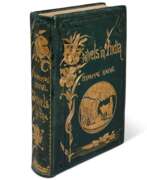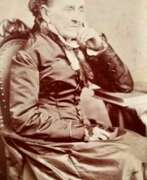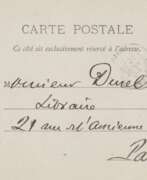Linguists 19th century


Richard Alsop was an 18th-century American writer and poet.
Alsop was one of the founders of the later famous literary group, the Hartford Witters. He wrote poetry in the journals The Political Greenhouse and The Echo, the latter soon becoming primarily concerned with satirical parodies of public speeches and articles of a political nature.
Alsop also published various translations from French and Italian.


Jean-Baptiste-Joseph Breton de la Martinière was a French stenographer, journalist, translator and writer.
Breton was a founding member of a group of stenographers of the Legislative Assembly and stenographed debates from 1792. He became parliamentary reporter in 1815 and remained so until his death. He was also one of the founders of Le stenographer of the Chambers and the Gazette des tribunals. A polyglot and knowing almost all the languages of Europe, Breton often acted as an interpreter in the courts.
Breton de la Martinière published books on China, as well as on Egypt and Syria, where he used materials by the scholar Jean-Joseph Marcel, who accompanied Napoleon to Egypt in 1798. The text contains much information on the customs, religion, and antiquities of Egypt, as well as a fascinating description of the recent French occupation.


Eugène Burnouf was a French Orientalist scholar, linguist, and researcher of Buddhism in the mid-19th century.
Burnouf studied at the School of Law and the Collège de France. In collaboration with the Norwegian orientalist Christian Lassen, he published Essai sur le Pali (1826) in one of the languages of Indian Buddhism. He then undertook the decipherment of Zoroastrian manuscripts.
As professor of Sanskrit at the Collège de France (1832-1852), Burnouf made a significant contribution to the study of Zoroastrianism. He also made a Sanskrit edition and French translation of the important Hindu text Le Bhâgavata Purana (1840) and published a history of Buddhism (1845).


John Camden Hotten was a British publisher, writer, linguist and bibliophile.
By mid-1855, Hotten had opened a small bookstore in London and then established his own publishing business, which after his death became Chatto & Windus. Hotten's publishing house published many works by classic and contemporary writers. After spending about six years in America, he was the first to introduce a number of American writers to the British public, including James Russell Lowell, Oliver Wendell Holmes, and Bret Harte.
Hotten compiled The Dictionary of Modern Slang, Slang, and Vulgar Words, first published in 1859 and reprinted many times thereafter. His other major work is A Handbook of Topography and Family History of England and Wales (1863). Hotten also wrote and edited literary and biographical material in various periodicals.
Hotten was a collector, author, and secret publisher of erotic works, which were illustrated, among others, by the famous caricaturist Thomas Rowlandson (1757-1827).


Eugene Jacquet, full name Eugene Vincent Stanislas Jacquet, was a Belgian orientalist and linguist.
From a young age, Eugene Jacquet tried to learn as many Oriental languages as possible, including Chinese, Sanskrit, Arabic, Persian and Turkish, as well as Malay and Indian. At first he was interested in sinology, but in the end he was mainly concerned with Indology. Eugène Jacquet was very talented and was also interested in epigraphy, numismatics and paleography.
Jacquet corresponded extensively with Orientalist scholars in Europe and India (e.g., Prinsep) and had grand plans for his future, but unfortunately he died at the age of only 27 from tuberculosis. Perhaps his most significant achievement was his participation in the decipherment of the ancient Persian cuneiform script.


Samuel Kettell was an American writer and editor.
He was an accomplished self-taught linguist and mastered fourteen languages. His humorous publications in the Boston Courier under pseudonyms attracted attention and in 1848 he became the permanent editor-in-chief of this newspaper.
Kettell's major work, however, was Samuel Griswold Goodrich's Samples of American Poetry with Critical and Biographical Notes, which was published in 1829. This comprehensive catalog is the first bibliography of early American poetry, and includes the works of nearly 200 poets before 1829.Kettell provided biographical sketches of each writer, from Cotton Mather to Francis Scott Key, Washington Irving, and Sarah Josepha Hale.
In addition, Kettell published A Personal Narrative of Columbus's First Voyage (1827) and Accounts of the Spanish Inquisition (1828).


Ardaseer Framjee Moos was a 19th-century Indian politician.
Ardaseer Framjee Moos was educated and later taught at Elphinstone Institute, and was the secretary of the Bombay Native Common Library from 1860 for more than two decades. An active participant in Parsi reform movements and Mumbai political life, he became treasurer of the Bombay Association in 1876. Moos prepared and published A Journal of Travels in India (1871), the illustrations in which are various views of the principal buildings of Lucknow, Agra, Dehli, and Calcutta. He also published dictionaries of English and Gujarati.


Peter Simon Pállas was a German and Russian scientist-encyclopedist, naturalist and traveler, who gave almost all his life to the service of Russia.
The breadth of his scientific interests made him a true encyclopedist, but he was particularly interested in natural sciences. By the age of 25, Pallas had already acquired European fame as a major scientist-naturalist. At the same time he received an invitation from the St. Petersburg Academy of Sciences, where he was offered a professorship. In 1767, Pallas arrived in St. Petersburg with his wife and soon led several important expeditions to Siberia and southern Russia. In his numerous ethnographic descriptions, the scientist was the first to report in detail on the Kalmyks, Tatars, Mordvins, Chuvashs, Nagaians, Tungus (Evenks), Votyaks (Udmurts), and Cheremis (Mari). In addition, he brought with him large natural-scientific collections. Later he traveled with scientific expeditions to Kamchatka, the Kuril Islands, Crimea and other previously unexplored lands.
In 1785 Catherine II attracted Pallas to the collection and comparative analysis of the languages of the peoples inhabiting America, Asia, Europe and Russia, and he compiled and published a comparative dictionary in two parts (1787-1789), in which more than 200 languages and dialects of the peoples of Asia and Europe were presented. In the last years of his life, among other things, Pallas was engaged in the preparation of a fundamental three-volume work on the fauna of Russia, Zoographia rosso-asiatica ("Russian-Asiatic Zoology"), in which more than 900 species of vertebrates, including 151 species of mammals, of which about 50 new species were introduced. This work was so extensive, and the descriptions of the animals were so thorough and detailed, that until the early 20th century the book remained the main source of knowledge about the fauna of Russia. In 1810. Peter Pallas went to Berlin to prepare illustrations for this work, but a year later the famous scientist died and was buried in Berlin.
A volcano in the Kuril Islands, a reef off New Guinea, and many animals and plants are named after Pallas.


Julia Evelina Smith was an American translator and linguist and suffragist.
Julia Smith grew up on a wealthy farm in Connecticut with four sisters who were active in favor of women's education, abolition, and suffrage. Julia began studying biblical Greek in 1843, as well as Latin and Hebrew, to make a literal translation of the Bible and to clarify the predictions of Christ's resurrection in 1844. After reading the Bible in its original languages, she set about creating her own translation, which she completed in 1855.
The work is a strictly literal translation: a Greek or Hebrew word is always translated by the same word wherever possible. It was not until 21 years later, in 1876, that Julia Smith finally achieved publication at her own expense. This edition was the first complete translation of the Bible by a woman. By the time she was 84 years old, Julia Smith was still successful as a linguist and also as an activist for women's suffrage.


Leonhard Steiner was a Swiss industrialist, artist, and playwright.
Leonhard Steiner was the son of a wealthy silk manufacturer and, having artistic and musical inclinations, was forced to take over his father's business. In the mid-1870s, among other duties, he was president of the Zurich Stock Exchange and served as president of the Exchange Association, but his activities in this field failed.
Steiner was forty-six years old when he decided to devote himself fully to painting and achieved a certain skill. He even managed to feed his family of ten through this labor. He painted high-altitude landscapes, which were very popular. Steiner also created several comedies, edited a Swiss-German dictionary and was an expert in the dialect of the city of Zurich. His work was also closely linked to the musical life of the city, as he was the longtime president of the men's choir. To this day, Steiner remains a highly respected man in Zurich precisely because of his work in the arts.


Francesco Valentini, full name Francesco Cosma Damiano Valentini, was an Italian linguistic scholar, teacher and translator who worked in Germany.
Valentini held a doctorate and was the Royal Prussian Professor of Italian Language and Literature in Berlin. From 1831 to 1836, he published an Italian-German dictionary in four volumes in Leipzig.
One day Valentini was invited to give a lecture on the theater and carnival masks of his native Rome. The lecture was such a success that it was later published in 1826 by the Berlin art dealer and publisher Wittich, who illustrated it with charming color engravings based on drawings by the Berlin artist Johann Heinrich Stürmer. The book was published in German and Italian.





